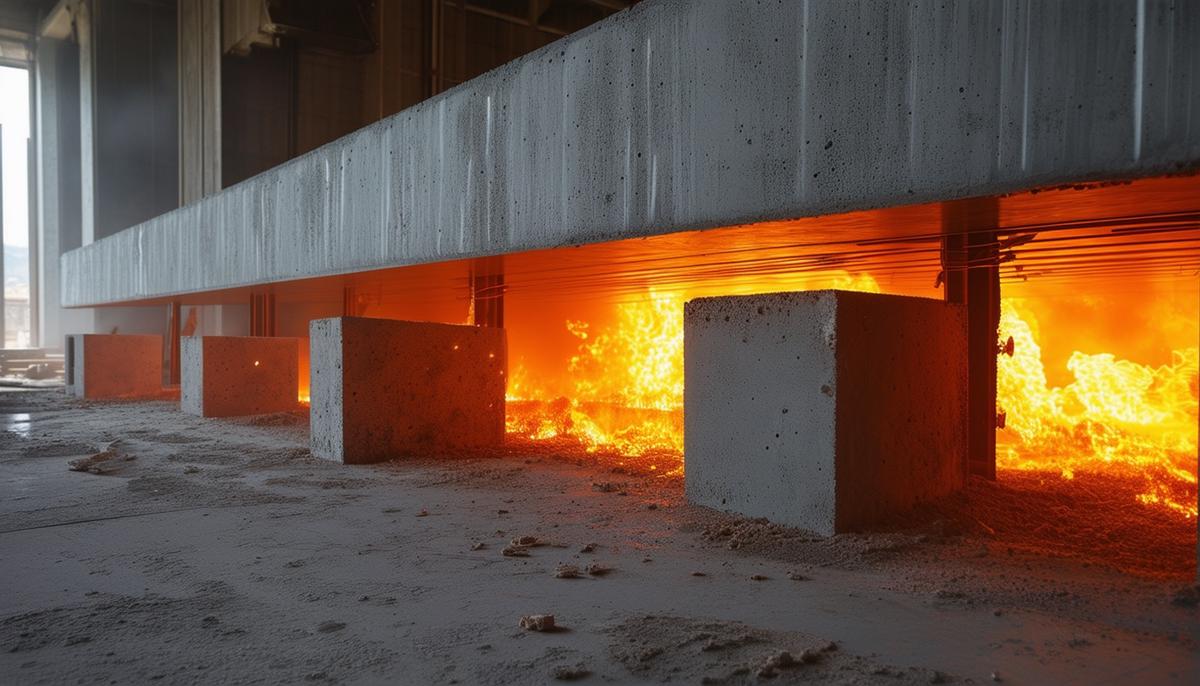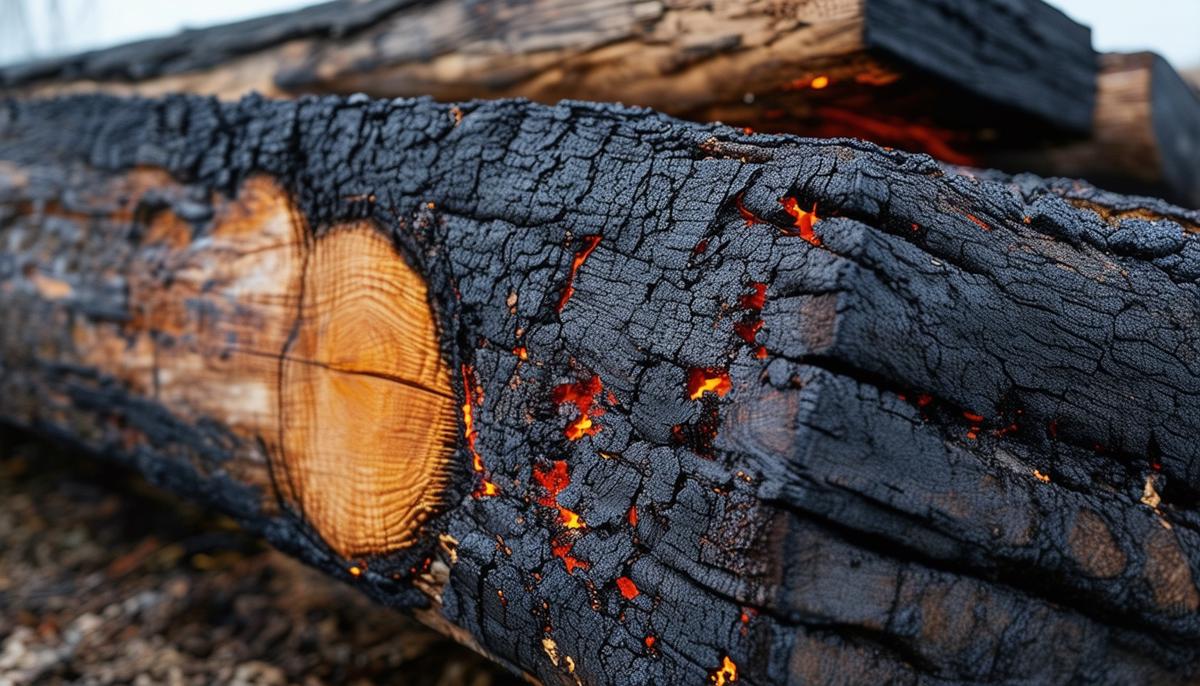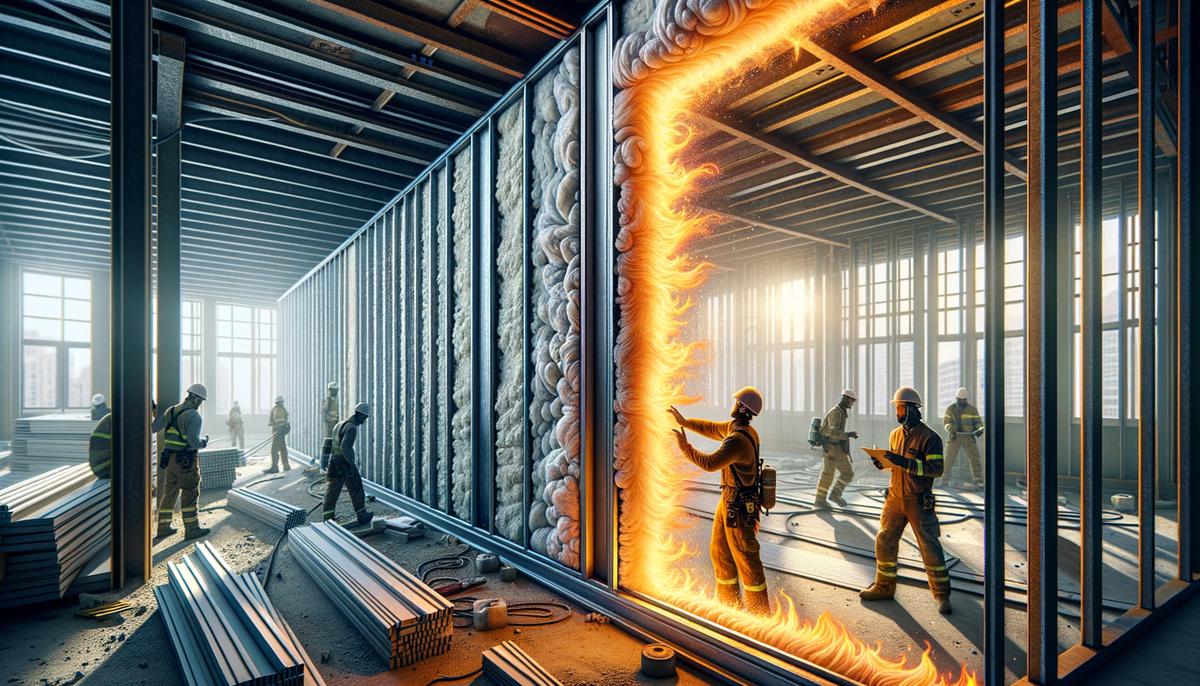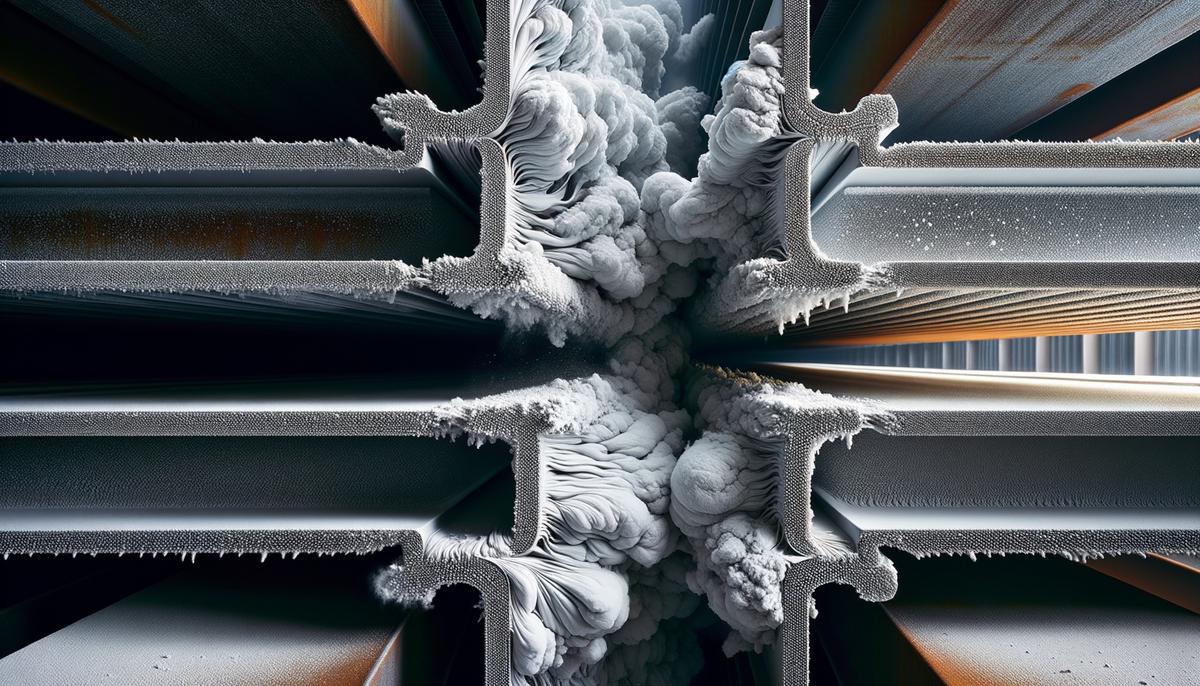Fire-Resistant Materials
Steel and concrete are top choices for fire-resistant construction. They maintain strength under intense heat. Steel's durability prevents easy collapse during fires. Concrete similarly holds its structure, providing solid support against flames.
Wood behaves interestingly in fires. Timber framing develops a protective charred layer, preserving its core strength. Unlike thinner 2x4s in stick-built homes, large timber pieces resist collapse longer. Fire-retardant treatments can enhance this protection.
Gypsum boards act as barriers between rooms, resisting ignition and controlling fire spread. Intumescent coatings on framing expand with heat, creating a protective shield.
Combining these materials creates a strong defense against fire. Each component contributes to buildings that can withstand intense blazes.

Timber Framing and Char Rate
Timber framing has surprising fire-resistant qualities. When wood burns, it forms a charred outer layer that protects inner layers from flames. This charring limits oxygen access, slowing fire spread.
Large timber beams used in framing are more resistant to fire damage than smaller wood pieces like 2x4s in stick-built homes. The massive beams have less exposed surface area, burning more slowly.
Fire-retardant treatments can further enhance timber's defenses. These treatments complement the natural char rate effect, providing additional protection against fire spread.

Gypsum and Intumescent Coatings
Gypsum boards and intumescent coatings work together for effective fire resistance in buildings.
- Gypsum boards are non-combustible and excel at preventing fire spread between rooms. They act as barriers, blocking the path of flames.
- Intumescent coatings expand when exposed to high heat, forming an insulating char layer. This protects steel or timber beams underneath, helping maintain structural strength during fires.
Combining gypsum boards and intumescent coatings provides excellent fire protection. Gypsum creates a perimeter defense, while intumescent coatings protect internal supports. This strategy ensures both structural integrity and safety in case of fire.

Steel Frame Fire Protection
While steel handles heat well, additional protection enhances its fire resistance. Two key methods are:
- Spray-applied fire-resistive materials (SFRMs): These act like a protective blanket for steel frames, slowing heat transfer and preserving structural integrity without adding much visual bulk.
- Intumescent coatings: These expand when exposed to heat, forming an insulating char layer that shields the steel underneath from flames.
Both methods aim to meet or exceed fire-rating requirements, ensuring steel structures maintain strength and safety during fires. Implementing these strategies provides peace of mind, knowing your construction can withstand intense blazes.

Combining different fire-resistant materials creates a strong defense in construction. Each element contributes its unique strengths, offering protection and durability against fire.
- International Timber. Fire resistance of timber structures. 2023.
- American Institute of Steel Construction. Design Guide 19: Fire Resistance of Structural Steel Framing. 2023.
- National Concrete Masonry Association. Fire Resistance Properties of Concrete Masonry. 2023.
- Brick Institute of America. Fire Resistance of Brick Masonry. 2023.
